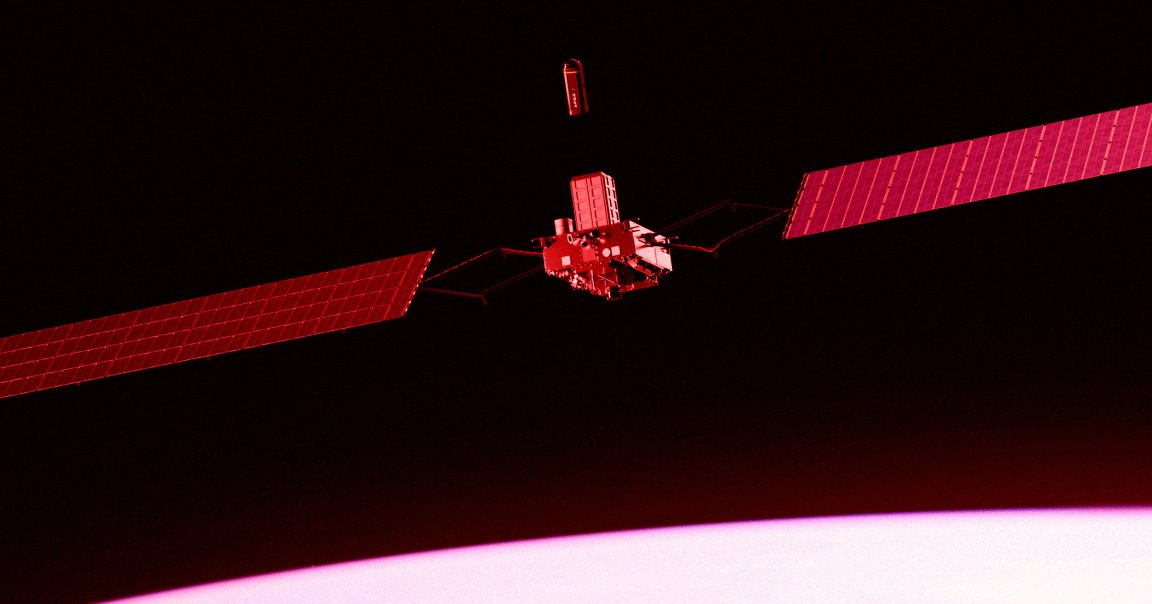
Last month, the Department of Defense announced it was requesting proposals from the private industry for prototypes of space-based interceptors (SBIs), which are orbital weapon systems designed to intercept missiles.
The request, largely seen as being part of the Trump administration’s proposed Golden Dome missile shield, has already drawn the attention of numerous contractors that want to develop such interceptors.
One of these companies, Los Angeles-based startup Apex, has been working on the mass production of satellite buses that can be integrated with customer payloads, as Ars Technica reports. The company launched its first satellite last year and secured a $46 million Space Force contract in February to deliver an unspecified number of satellites over the next six years.
This week, the company announced “Project Shadow,” which it claims is “America’s first commercially-led, on-orbit space-based interceptor demonstration.”
The company is aiming to send a pair of interceptors “on one of Apex’s commercial off-the-shelf satellite platforms” as soon as June 2026. After deployment, the goal is to “environmentally control the interceptors” and even “issue a fire control command.”
“Apex is built to move fast, and that is exactly what America and our allies need to ensure we win the New Space Race,” said CEO Ian Cinnamon in a statement. “In under a year, we are launching the host platform for space-based interceptors, called an Orbital Magazine, which will deploy multiple prototype missile interceptors in orbit.”
Cinnamon was upfront about his company’s willingness to play ball with the Trump administration’s unusual approach to working with the private industry.
“Apex isn’t waiting for handouts or contracts; we are developing this Orbital Magazine technology on our own dime and moving incredibly fast,” he added. The goal, he said, is to deploy two interceptors to demonstrate the “core capabilities of the Orbital Magazine — an advanced host platform purpose-built to support next-generation space defense missions.”
“Beyond communications, the Orbital Magazine will serve as a life-sustaining platform for the interceptors — providing essential power, heat, and environmental support,” the company wrote in its statement.
For now, plenty of questions remain surrounding the Trump administration’s Golden Dome. According to the president, the defense shield will cost $175 billion over the next three years, drawing skepticism from experts.
Last month, Bloomberg reported that the price for the project could be far higher, with American Enterprise Institute analysts pegging the system somewhere between $252 billion and $3.6 trillion over the next 20 years.
Regardless of the dome’s price tag, Cinnamon remains adamant that the tech behind SBIs is feasible.
“All of the pieces that are required to make it viable exist,” he told Ars. “We have satellites, we have boosters, we have seekers, we have fire control, we have IFTUs (in-flight target updates), we have inter-satellite links.”
However, Cinnamon conceded that combining these various parts is “really, really difficult.”
The goal is to eventually carry payloads of up to 11,000 pounds, “allowing thousands of SBIs to be staged in orbit,” according to the company.
Apex isn’t the only contractor vying for an interceptor contract with the Pentagon. According to Ars, Lockheed Martin is also working on the tech, planning a “demonstration by 2028,” CEO James Taiclet announced during a earnings call this week.
“We are building prototypes — full operational prototypes, not things in labs, not stuff on test stands, things that will go into space, or in the air, or fly across a missile range,” he added. “These are real devices that will work and that can be produced at scale. So the space-based interceptor is one we’ve been pursuing already, and that’s all I can say about that.”
A second major military contractor, Northrop Grumman, has also indicated it’s carrying out similar tests — meaning Apex will be competing with the big dogs.
More on Golden Dome: Trump’s $175 Billion Golden Dome is Turning Into a Disaster